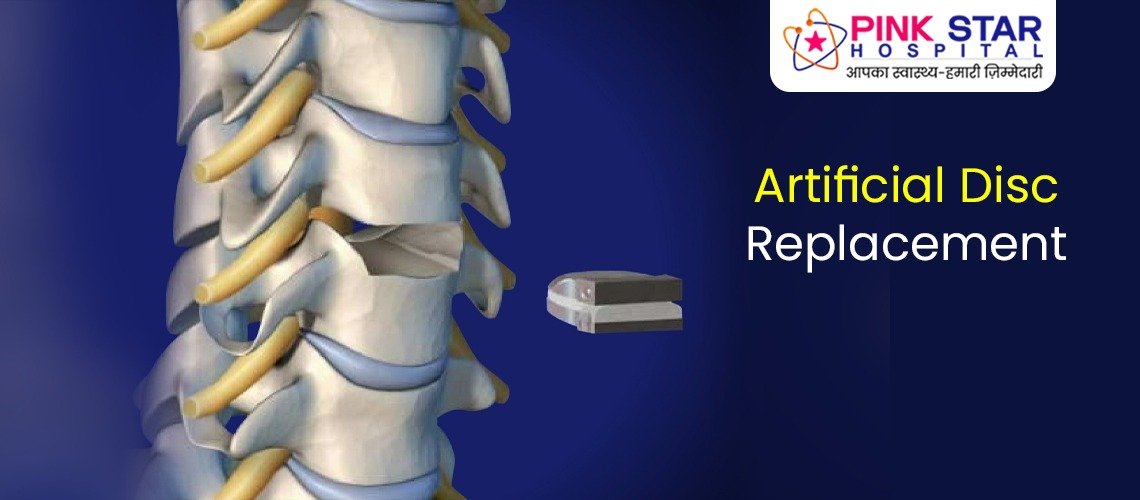Artificial Disc Replacement
Back pain is a common issue affecting millions worldwide, primarily due to degenerative changes in the spinal discs. While conservative treatments are often effective initially, severe cases may necessitate surgical intervention. Artificial Disc Replacement (ADR) offers a modern alternative to traditional spinal fusion techniques, providing pain relief and helping restore natural spinal motion. This procedure involves replacing damaged discs with artificial implants, aiming for better recovery times, pain relief, and overall quality of life. Discover how ADR transcends traditional treatments to offer long-term relief from chronic back pain.
What is Artificial Disc Replacement?
Artificial Disc Replacement is a procedure used to address back pain by replacing the damaged disc between the vertebrae with an artificial one. It is typically recommended for patients suffering from chronic back pain while maintaining spinal motion. Unlike traditional spinal fusion, which restricts movement, ADR aims to preserve spinal function. This advanced approach, employed by leading spine surgeons, promises to improve patient outcomes by reducing pain and enhancing quality of life through maintained spinal mobility.
Who Needs Artificial Disc Replacement?
Artificial Disc Replacement is suitable for individuals experiencing severe back pain due to damaged spinal discs. Conditions that may warrant ADR include:
Degenerative Disc Disease:
This condition involves long-term deterioration of the spinal discs, leading to pain and stiffness. ADR replaces the damaged disc with an artificial one to alleviate pain and improve mobility.
Disc Herniation:
When a disc deteriorates, it can put pressure on nearby nerves, causing pain, numbness, or weakness. ADR replaces the problematic disc to relieve pressure on the nerves.
Discogenic Back Pain:
This type of pain originates from the discs themselves, not just the nerves around them. ADR aims to replace the painful disc with an artificial one to alleviate pain and enhance mobility.
Failure of Other Treatments:
If conservative treatments like physical therapy or medications have not provided relief, ADR may be a viable option for improvement.
Good Spinal Health:
For ADR to be effective, the spine should be in good condition to ensure the procedure restores back functionality and improves movement.
Desire for Natural Movement:
Unlike fusion surgeries that restrict spinal motion, ADR allows for more natural spine movement. It is a suitable choice for those who want to maintain flexibility and avoid stiffness.
How Does Artificial Disc Replacement Work?
The ADR procedure involves several steps:
Preparation: Before surgery, your doctor will evaluate your suitability for ADR using tests such as MRI scans to assess the condition of your spine.
Anesthesia: During the procedure, anesthesia is administered to ensure comfort. General anesthesia affects the entire body, while regional anesthesia numbs the area from the waist down.
Incision: A small incision is made in the back to access the affected disc, with careful movement of muscles and tissues.
Disc Removal: The surgeon removes the damaged disc that is compressing nerves, creating space between the vertebrae.
Implantation: An artificial disc, designed to mimic the natural disc, is implanted into the space left by the removed disc to restore spinal motion and alleviate pain.
Closure: The incision is closed with stitches or staples and dressed to promote healing.
Recovery: Patients recover in a monitored area with healthcare professionals. Pain control medication and monitoring are provided, and follow-up visits may be necessary.
Physical Therapy: Your doctor may recommend physical therapy exercises to aid in recovery and improve spinal flexibility.
Benefits of Artificial Disc Replacement
Artificial Disc Replacement offers several advantages over traditional fusion surgery:
Motion Preservation: ADR maintains the natural movement of the spine, unlike fusion, which restricts movement by joining two vertebrae.
Reduced Adjacent Segment Disease: Fusion surgery can accelerate degeneration of adjacent discs, while ADR helps preserve natural spinal biomechanics and minimize this risk.
Faster Recovery: ADR generally involves less tissue trauma compared to fusion surgery, leading to quicker recovery times and preserved spinal motion.
Improved Quality of Life: Many patients experience reduced pain and enhanced function after ADR, leading to better quality of life and patient satisfaction.
Conclusion
Artificial Disc Replacement represents a significant advancement over traditional spinal fusion. By allowing for natural spinal movement and reducing the risk of adjacent segment disease, ADR provides a promising option for long-term relief from chronic back pain. With faster recovery times and enhanced quality of life, ADR has established itself as a leading choice for patients seeking effective treatment for debilitating spinal conditions. This innovative approach not only addresses immediate symptoms but also promotes long-term spinal health and satisfaction.


Graig
pinkstarhospital.com
pinkstarhospital.com
Andreas
pinkstarhospital.com
pinkstarhospital.com